#jaculus
Explore tagged Tumblr posts
Text

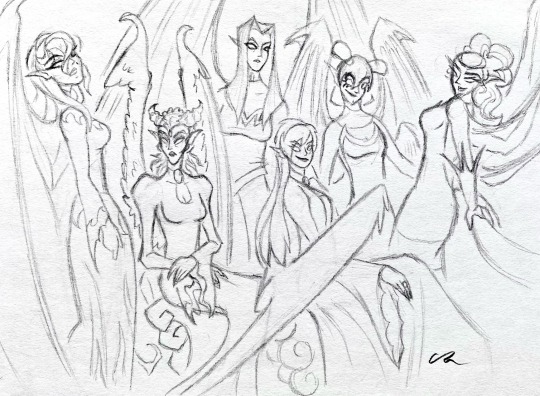

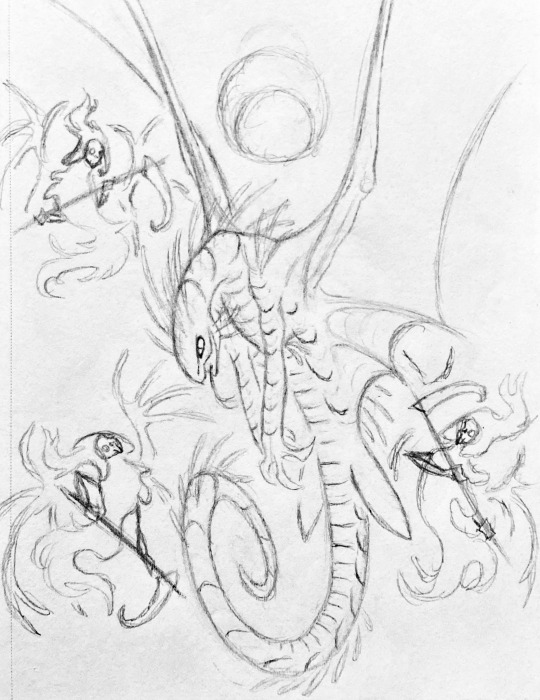

Last batch of unfinished drawings, the Dark Faerie ones were going to be colored, but I changed my mind about how to present one and the amount of detail I want in another (the Photo I referenced for the second pic was of the Mitford Sisters of Take Six Sisters). The three Child of Light monsters, again, were going to be colored, but I changed my mind about some aspects of them.
Still wanted to show them off because I do genuinely like them.
#neopets#dark faeries#dark faerie sisters#malice#spite#vanity#the darkest faerie#janakolra#jhudora#drakara#child of light#col#crepusculum#cordelia#jaculus#nox#norah#sea monster#queen umbra#dragon#my art#cerberus253’s art
12 notes
·
View notes
Text
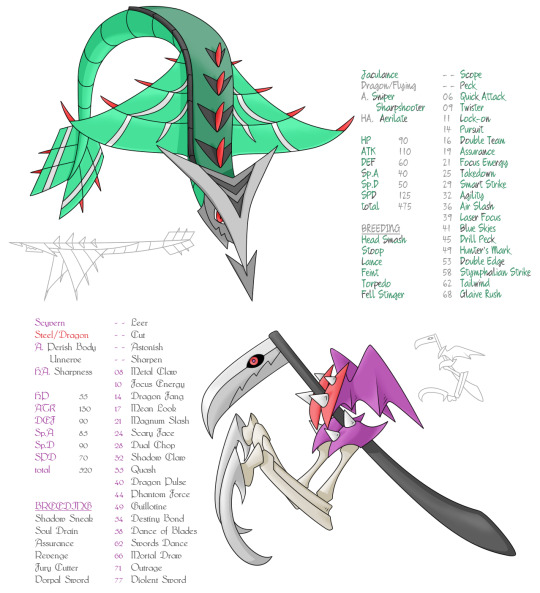
Jaculance are typically seen fluttering high in the sky, undulating through the air as they look for a target. Upon spying worthy prey, they fold their wings tightly to their bodies and dive with incredible speed towards the target. Their reinforced snouts are sharp enough that with enough speed, they can pierce their target and exit out of the other side. When perched, a Scyvern resembles a vulture of sorts and this image combined with their bladed face and limbs has associated them with death since time immemorial. Their small wings seem to have no use in their ability to fly but seem to be used by the pokemon to express itself. — Ability Info — — Attack Info —
2 notes
·
View notes
Text
This was named after the mythical jaculus! Although the jaculus itself was most likely the saw-scaled or carpet viper.

Javelin Sand Boa (Eryx jaculus), family Boidae, Lebanon
photograph by Rami Khashab
80 notes
·
View notes
Text

A javelin sand boa (Eryx jaculus) basking on a rock in Shirak, Armenia
by cowyeow
#javelin sand boa#sand boas#boas#snakes#reptiles#eryx jaculus#eryx#boidae#serpentes#squamata#reptilia#chordata#wildlife: armenia#wildlife: asia
140 notes
·
View notes
Text
What B'runi was doing while I was on vacation
#ffxiv miqo'te#ffxiv shitposting#ffxiv meme#ffxiv#ff14#ff14 ffxiv#flashing lights#flashing tw#flashing warning#b'runi masna#jaculus tredici
14 notes
·
View notes
Note
Hold up CARD MASTERS?? IVE NEVER SEEN ANYTHING ABOUT THIS?? AM I JUST DUMB?? INFO DUMP NEOW
AUGH OKAY UH
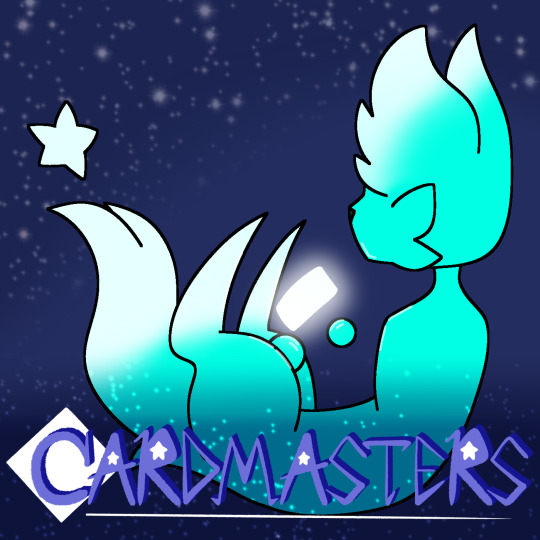
Cardmasters, otherwise known as Cardmasters: Chronicles of Light and Dark is a comic revolving around a group of highschoolers by the names of Isami Azuro, Ayaka Chelute and Cleo Abaryx
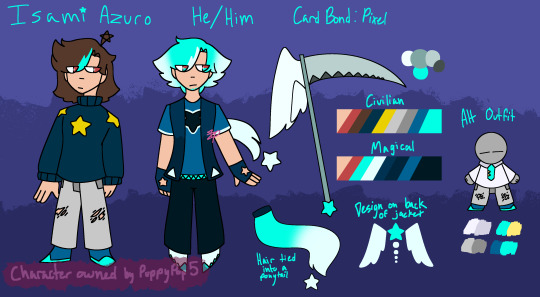
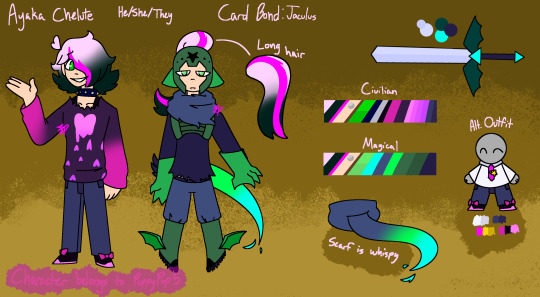
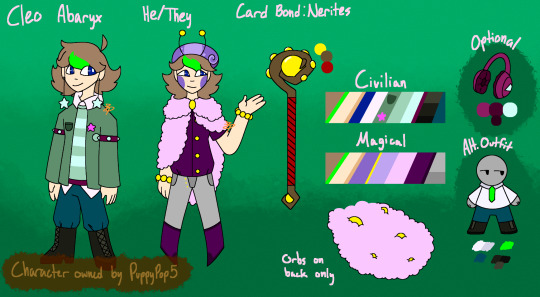
They, much like the title of the comic, are Cardmasters. People bonded to these magical beings called Cards. Through Cards they're able to access a much stronger form (it's just a magical girl form LMAO) which they use to protect civilians and the city of [UNNAMED]
Here are the Cards that the protags are bonded to
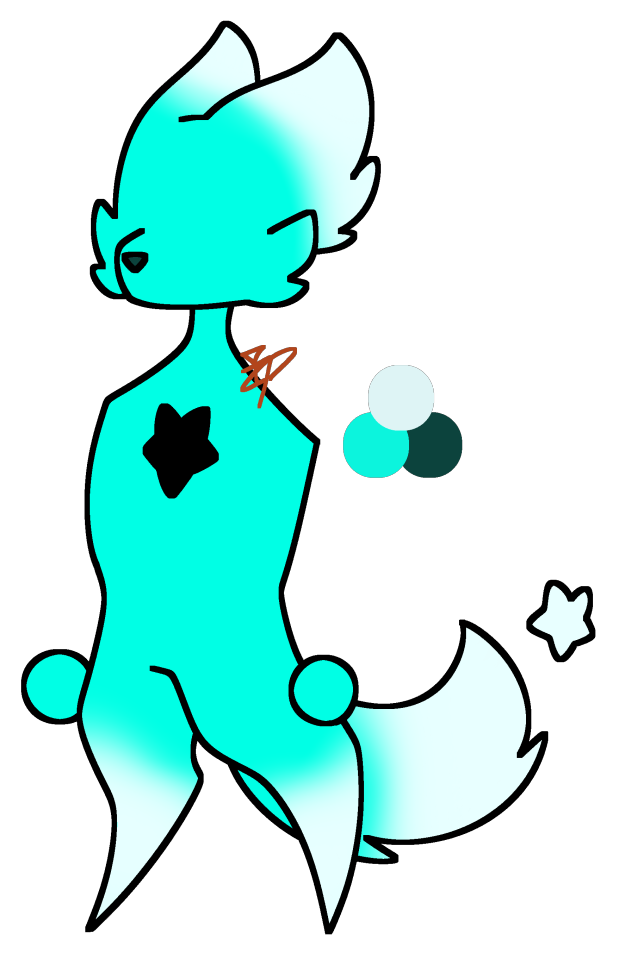
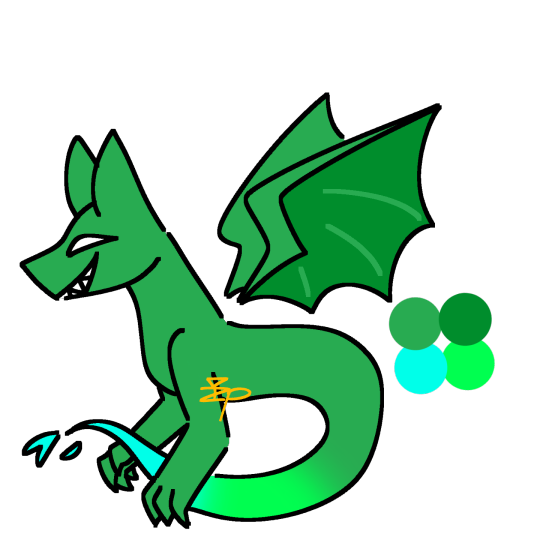
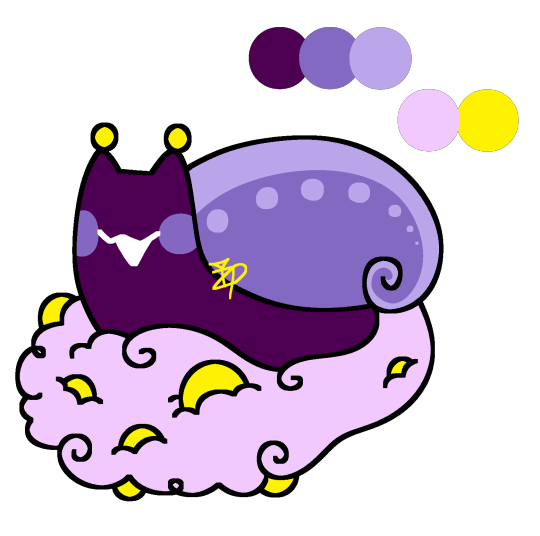
Do ask if you have anymore questions........hehe.....
#Friend Tag#Cardmasters#OC Talk#OC: Isami Azuro#OC: Ayaka Chelute#OC: Cleo Abaryx#OC: Pixel#OC: Jaculus#OC: Nerites#Creeture Talk#Cardmasters in 2025 <3333333#man i really need to work on it more ive been neglecting it
1 note
·
View note
Text
Writing Notes: Medieval Beasts
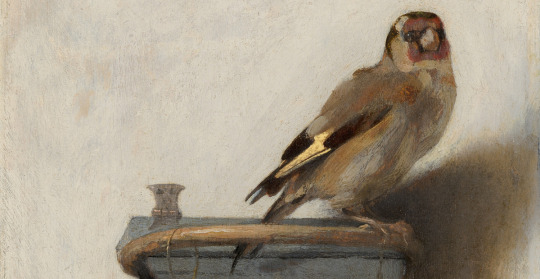
for your next poem/story (pt. 1)
Aeriophylon - a bird seldom seen because it flies above the clouds; if it is captured while still young, it can be trained as a hunter, and will stay with the person who raised it without being confined
Barnacle goose - grow from trees; the young birds hang from their beaks from the trees; when the birds are mature enough, they fall from the trees; any that fall into the water float and are safe, but those that fall on land die
Caladrius - an all-white bird that lives in the king's house; if it looks into the face of a sick man, it means that he will live, but if it looks away, the sick man will die of his illness; to cure the sick man, it looks at him, and drawing the sickness into itself, flies up toward the sun, where the disease is burned up and destroyed
Dipsa - a serpent so small it is not seen before it is stepped on, and so poisonous, anyone it bites dies before he feels the bite
Echeneis - a fish, half a foot in length, that clings to ships and delays their passage; when this fish attaches to a ship, even in the high winds of a storm the ship will not move, but seems to be rooted in the sea; found in the Indian Sea
Goldfinch - a bird that eats thorns and thistles
Hercinia - a bird that serves as a beacon for travelers because its feathers glow so brightly in the dark that they light up the path
Isida - a small bird with beautiful green, blue, sapphire and red feathers; it is said that if you remove the bird's skin with the feathers still attached and stick it to a wall, the feathers will continue to change as though the skin was still alive
Jaculus - a serpent that can fly; hides in a tree until an animal passes underneath, and then it throws itself down on the animal and kills it
Kingfisher - a bird that calms sea storms; at mid-winter, when the sea storms are strongest, the kingfisher lays its eggs in the sand on the shore. For 7 days it hatches the eggs, and for an additional 7 days it nourishes them. During those 14 days the sea remains calm, unnaturally for the season. Sailors know that during this time they will not be threatened by storms, and call this the "halcyon days" after the Latin name of the kingfisher, "halcyon".
Source ⚜ Writing Notes & References ⚜ More: Medieval Period
#medieval#writing inspiration#fantasy#writeblr#dark academia#spilled ink#writing prompt#literature#writers on tumblr#writing reference#poets on tumblr#poetry#creative writing#fiction#writing ideas#light academia#novel#carel fabritius#writing resources
209 notes
·
View notes
Note
What species of dragons are found in Africa? What clades do they belong to?
ooo so I was wanting to do a Smaugust Post about this but I was unsure how, so I'll just reply to this question with 12 very rushed dragon doodles...
(edit; to be clear this is in my creative project Dracones Mundi, not 'real dragons' or a comprehensive list of mythology. Dragon designs inspired by mythology)
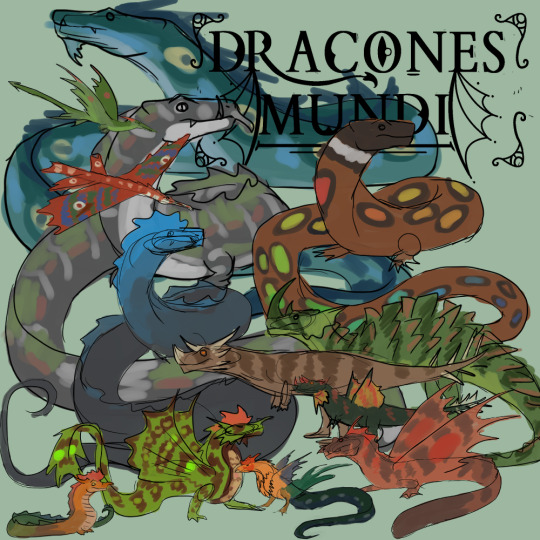
Click the 'keep reading' to learn more!
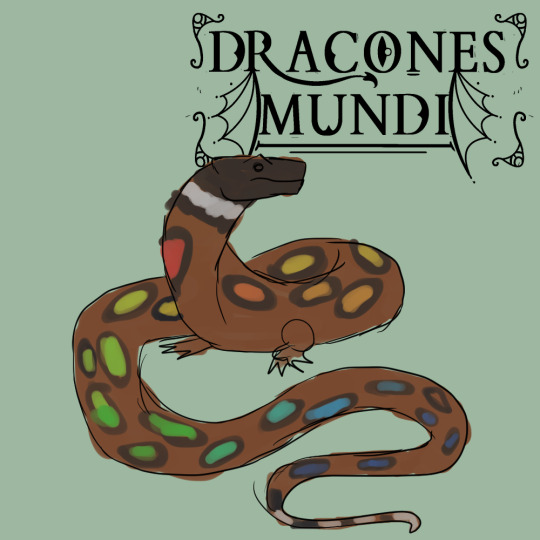
West African Rainbow Serpent (Dracovermidae: Afroserpens iris)
This dragon is specifically a 'west African rainbow serpent' to differentiate been this and the Australian rainbow serpent. The West African Rainbow Serpent is based on West African folklore (Vodun tradition among other things, deities such as Ayedo Wedo etc.) and the physical design is based on an art sculpture of Ayedo Wedo a friend sent me a picture of (black head, white neck collar) + some snakes I like (spots with dark rims) + rainbow gradient.

Grootslang (Dracovermidae: Afroserpens magnus)
A gigantic dragon with diamond eyes said to live in caves under South Africa - looking into South African caves to discover there are vast bodies of water in huge caves was an experience - the above design is a loose idea, the final Grootslang for the Dracones Mundi project may look different...
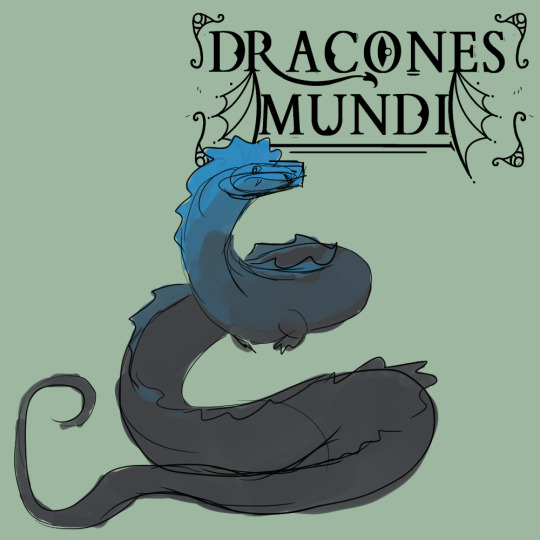
Elephant Eating Serpent (Dracovermidae: Afroserpens aethiopicus)
Based on bestiaries saying 'big serpents in Africa wrap elephants in their coils'.
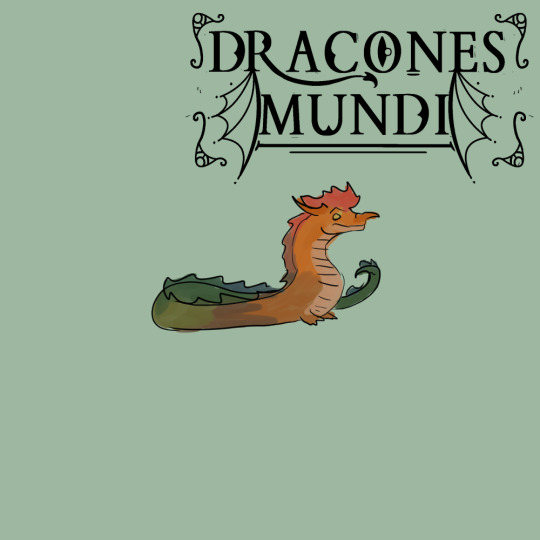
Chicken Headed Serpent (Afroserpens gallocephallus)
I might merge this design with the existing cockatrice design (see further below), only time will tell...
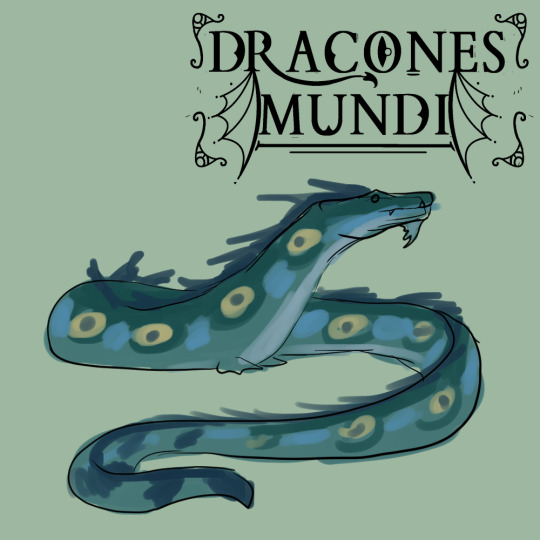
Nile Serpent? (Dracovermidae: Dracovermis hydra)
Huge serpent found in the Nile, and in the Mediterranean. Inspiration for Apep/Apophis in Egypt, but also for the Hydra in Greece.
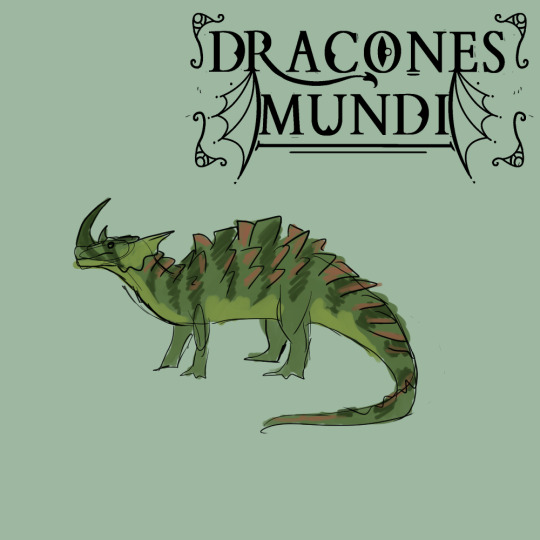
Congan Plated Dragon (Testudracidae: Stegosuchus monstrum)
Large dragon that lives in the Congo Basin - inspired by Mokele Mbembe, Emele Ntouka and Mblieu Mblieu Mblieu
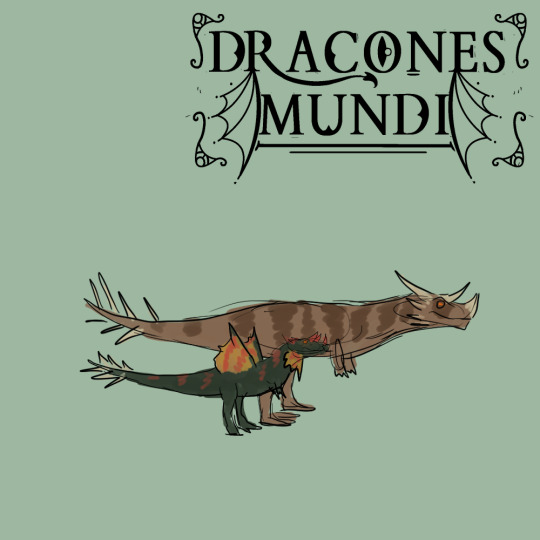
Dinodrakes (Drakonidae: Dinodrako...? )
Silly dragon I put on Madagascar - not inspired by folklore, these are just funny dinosaur inspired dragons. Mr Razzledazzle and his beautiful big wife.
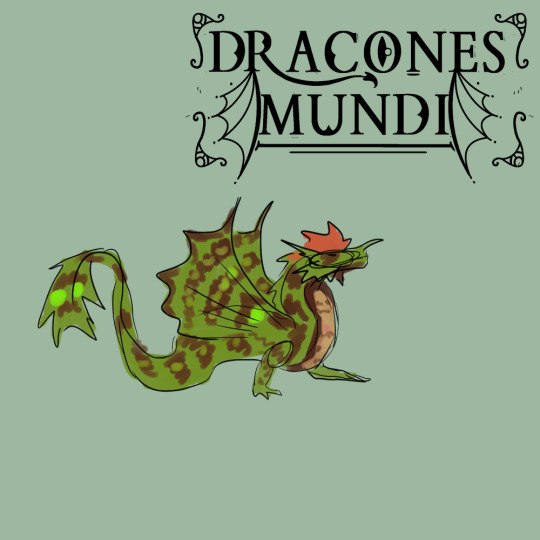
Green Wyvern (Megaviperidae: Megavipera virida)
Based on Europeans slapping a little green dragon on maps of Africa for 'Aethiopia', 'here be dragons'. Also this is Saint George's dragon, so in versions of the legend where the saint fights the dragon in Libya I decided to put the green wyvern in Libya. Green wyverns therefore have a wide distribution in Dracones Mundi as Saint George has fought the dragon throughout North Africa, the Middle East and Europe.

Kongomato (Megaviperidae: ?)
A swimming dragon that lives in Zambia - it can grab boats with it's powerful jaws, swim with it's powerful tail and has huge wings. I am not certain on this final design, working on it...
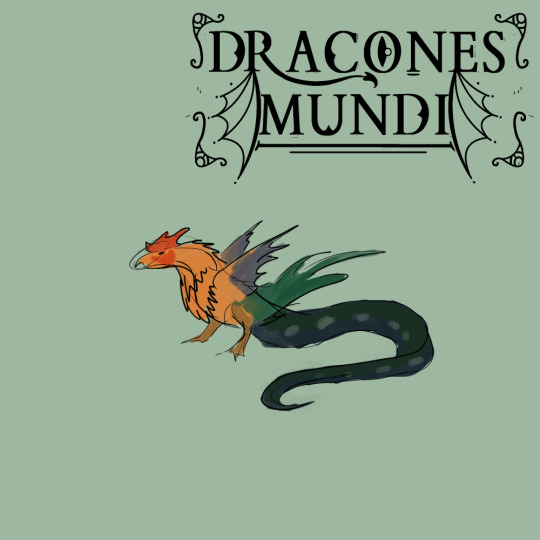
Cockatrice (Medaviperidae: Basilliskos gallimimus)
CHICKEN DRAGON. Very deadly. Found throughout the world, including Africa.
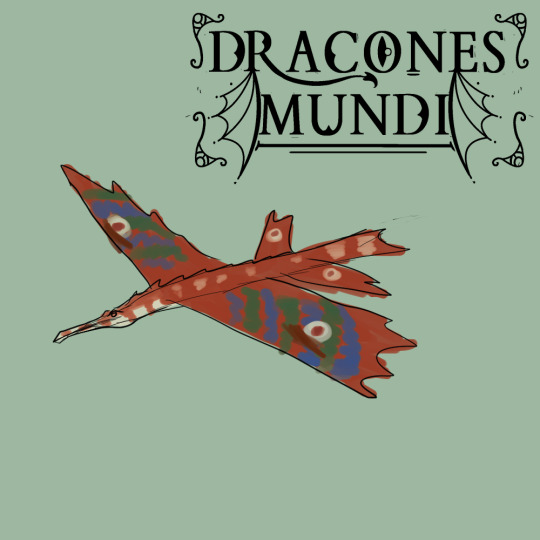
Jaculus (Megaviperidae: Pteraserpens jaculus)
Jaculus, the javeline serpent, can fly at intense speeds, stabbing prey with it's sharp face.
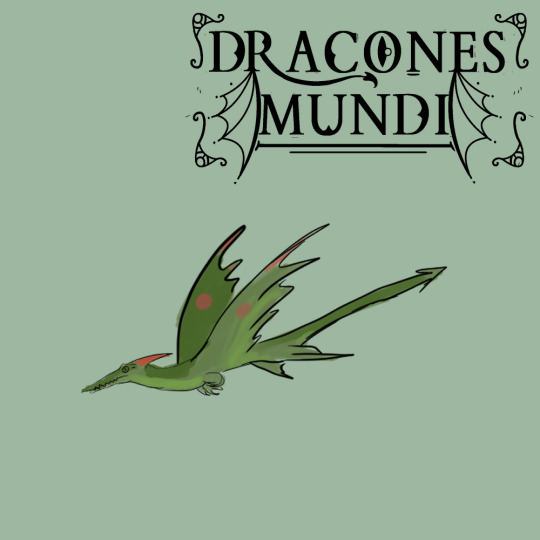
Terrorsaur (Megaviperidae: Pteroserpens...?)
Silly dragon based on "what if janky cartoony green pterodactyls are dragons?" and then I found a lot of cryptozoology places 'pterosaurs' in central Africa. Playing with this concept, nothing solid yet.
...
There are some other African dragons that I'm not sure about including - Ninki Nanka is something I have had on my radar for a while but I could not find enough info on it to write or draw something (recently looked it up again and there is more info wow... Okay next draft will include Ninki Nanka!!!!)
and Akhekhu which I had in a previous draft then abandonned. Might put him back in. Not sure if he's dragony enough?
So in this current roster of African dragons we have 6 inspired by African folklore and mythology (Grootslang, Rainbow Serpent, Nile Serpent, Congan Plated Dragon, Kongomato, Chicken Headed Serpent) 4 inspired by European mythology saying 'this lives in Africa' (Cockatrice, Green wyvern, Jaculus, Elephant Eating Serpent) and 2 I made up just for fun (Dinodrakes and Terrorsaurs)
137 notes
·
View notes
Text
Jaculinykus yaruui Kubo et al., 2023 (new genus and species)
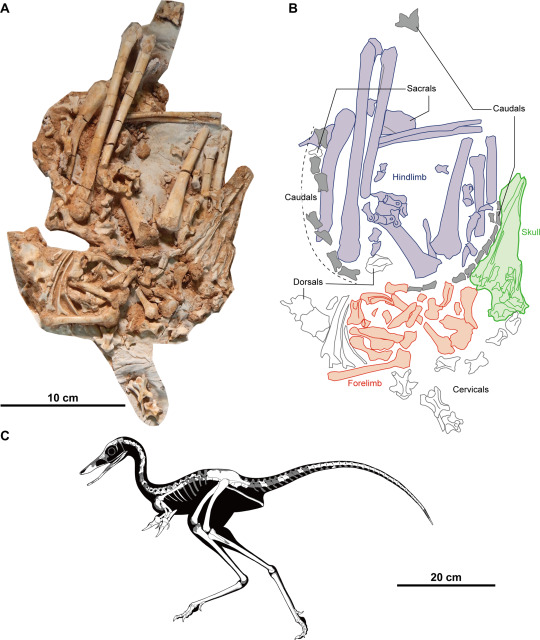
(Type specimen and schematic skeletal of Jaculinykus yaruui, with preserved bones in white on the skeletal, from Kubo et al., 2023)
Meaning of name: Jaculinykus = jaculus [small dragon in Greek mythology] claw [in Greek]; yaruui = speedy [in Mongolian]
Age: Late Cretaceous (Campanian–Maastrichtian?)
Where found: Barun Goyot Formation, Ömnögovi, Mongolia
How much is known: Nearly complete skeleton of one individual.
Notes: Jaculinykus was an alvarezsaurid, a group of unusual small theropods with short but powerful forelimbs, each tipped with an enlarged thumb claw. Their other fingers were highly reduced, and in at least one case (Linhenykus), probably lost entirely. Jaculinykus appears to exhibit an intermediate stage in finger loss, having lost one of the smaller fingers on each hand. This makes it the first known example of an alvarezsaurid with two-fingered hands.
Jaculinykus is also one of the most completely known alvarezsaurids. Most of the bones in the type specimen have probably remained close to the original positions that they were held in when the dinosaur died, and they suggest that Jaculinykus slept in a very bird-like posture with the head turned back and tucked close to the body. A similar sleeping pose had previously been found in the troodontid theropods Sinornithoides and Mei, but Jaculinykus provides the first strong evidence that alvarezsaurids (which were more distant relatives of modern birds than troodontids) adopted the same behavior.
Reference: Kubo, K., Y. Kobayashi, T. Chinzorig, and K. Tsogtbaatar. 2023. A new alvarezsaurid dinosaur (Theropoda, Alvarezsauria) from the Upper Cretaceous Baruungoyot Formation of Mongolia provides insights for bird-like sleeping behavior in non-avian dinosaurs. PLoS ONE 18: e0293801. doi: 10.1371/journal.pone.0293801
366 notes
·
View notes
Text
HoO AU: SoN & New Rome
Son of Neptune:
Waking up: Perseus wakes up surrounded by snarling wolves with no memory of himself, brief combat full of raw instinct, pulling out a sword he recognised not by name but in the feel of the ocean, a flash of a dark-eyed girl dressed in silver and the resolve to be better. In the momentary distraction, a wolf lands a bite on his arm, but its teeth just scate off with a scatter of pale golden sparks like struck metal and a faint sensation of pressure.
Going to Camp: Skip forward and he's on the move to New Rome, having completed Lupa's training and earned her begrudging respect. Tires quickly from the 'Cursed Styx-water' Lupa said he'd been doused in, consumed ambrosia and drinks nectar in equal parts as water to stay awake and moving. It also keeps him thrumming with almost-feverish warmth.
Parallels to Thalia being chased to CHB, picks up a horde of unkillable mosters in pursuit. Gorgon sisters, a lost of snakes (such as Jaculus, Prester and Haemorrhois), Alecto/Mrs Dodds (who blames him for Hades/Pluto incapacitation by mixing Camps into conflict) & cyclopses, wich causes memory-headaches.
Juno gives the same ultimatum of running to the sea for safety or going to Rome and sacrificing, suffering and regaining memory. Instead of River Tiber washing away the Curse it errodes away his mortality, Juno making white water lilies grow and tangle around his legs while she gets increasingly heavier. Cross between her sacred white lilies & lotus and water-association indicating Neptune. Leaves Percy with more grey in his hair and wearing a wreath of white flowers, a mark of favour and a warning in one.
(Dichotomy between Percy and Frank: both of sea-blooded with white hair marking mortal life lost, but bringing Percy closer to godhood and Frank closer to death. A product of willing sacrifice and a hereditary curse framed like a gift.)
Following cannon with recommendation fiasco, but additional powerplay of Frank trying to use his family/social standing to support Hazel's position only to be undermined by Octavian. If Gwen had not stepped in, alternative route for outsider-intake is the lower social caste of 'Servitor', a servant/labourer for the Legion rather than a soldier.
Camp Percy-ception: wary & fearfully respectful. Neptune is a bad omen, but too powerful to dare disrespect, especially to a first-gen demigod. Immediately induct him as a priest to Neptune, gives understanding of Octavian's power as Augur. After War Games, rumours stir of Perseus being a sea-god turned mortal, sent as a Test for CJ and to complete a Task. Blessed by Neptune with iron skin like Caeneus of myth.
(Dichotomy between Percy and Jason. Percy a 'Flamen Neptunalis', a minor priest/ flamen, head of his temple by default. While Jason was a 'Flamen Dialis', the most prestigious of all priests and one of three flamines maiores, who were of patrician rank, who then became a pontifex rather than lead the temple. Both 'Big Three' gods but one of an abandonned, avoided, near-disrepair temple while the other the largest and most esteemed, visited and worshiped in Rome. The position helped Jason become Praetor, but Octavian may use the same to hinder Percy being legitmised after being raised on shields.)
Quest: Lets say about 2 months after Percy arrival? Quest is given, Octavian social power on full display, plays on rumours of Perseus-divinity to give no aid. Reyna beats him to it and claims the service of Perseus to assist Frank in returning the Eagle Standard to the Legion as his Task, even though she knows he's not a god.
Alaska: follows mostly the same, but Percy exhausts himself much easier so the others guard him while asleep, Frank knows how to shapeshift but it burns his stick-life force each time and puts white streaks in his hair, so he has to uses it sparingly/strategically. Hazel has no flashbacks, but has phobia of cold water from drowning and disassociates from her living body from having spent so long dead.
Thanatos: The Styx-ice chains almost rip Hazel's soul out and freezes her to them, Frank burns life to free her and melt the chains, breaking them and Hazel's Curse.
From temple training, Percy gains understanding of Roman-Greek god divide, so after Thanatos is freed from chains he deliberately invokes his Roman for Letus as a more warlike god, using the tribute of the Ghost Legion souls to ask for aid with killing the Giant Alceonyus.
Return to Legion bearing gold, defeat Polybotes, Percy is raised on shields to become Praetor. Two weeks later, message comes from CHB, one month deliberation delay between that and Argo II arrival. End Book 2.
#heroes of olympus#cannon rewrite#character redesign#percy jackson#hazel levesque#frank zhang#god percy#mortal frank#New Rome#camp jupiter#octavian pjo#riordanverse
9 notes
·
View notes
Text

Jacula (Якула) — daughter of Hibiscus and Artemisia, mother of Amphisbaena, Chelyder, Chersydros and Dipsas
First generation Sand/Rain hybrid
Status: alive
She is big (very), can breathe fire, has venomous teeth (but is not capable of spitting poison and the poison is closer in composition to the poison of SandWings, and not to the "acid" of RainWings) and a very large almost straight poisonous tail barb. Jacula can also slightly change the color of her scales within the typical colors of SandWings, but she cannot do this as quickly and perfectly as RainWings.
Jacula is the matriarch of the clan Medusa, which she rules with an iron claw for many years, despite her very advanced age (she is already a great-grandmother).
Clan Medusa (clan Gorgon, клан Горгона) itself is heavily based on the Libyan snakes mentioned in Pharsalia, which spawned from the Medusa's blood, and Jacula's name is reference to Jaculus (which is somewhat ironic because this dragon is non-venomous unlike Jacula).
A few quotes from Pharsalia in English, Russian and Latin:
About snakes that spawned from Medusa's blood:
Yet that earth, In nothing fertile, void of fruitful yield, Drank in the poison of Medusa's blood, Dripping in dreadful dews upon the soil, And in the crumbling sands by heat matured
Этот бесплодный край, не богатый доброю нивой, Тотчас, однако, впитал стекавшие яды Медузы, Крови звериной ее отравою полные брызги: Их оживляла жара и в рыхлом песке кипятила.
illa tamen sterilis tellus fecundaque nulli arva bono virus stillantis tabe Medusae concipiunt dirosque fero de sanguine rores, quos calor adiuvit putrique incoxit harenae.
About Jaculus:
Lo! Upon branchless trunk a serpent, named By Libyans Jaculus, rose in coils to dart His venom from afar. Through Paullus' brain It rushed, nor stayed; for in the wound itself Was death. Then did they know how slowly flies, Flung from a sling, the stone; how gently speed Through air the shafts of Scythia.
Бросившись издалека, со ствола иссохшего дуба, Сразу вонзилась змея (что «копьем» зовет африканец): Павлу она прошла сквозь главу, виски пронизавши. Яд ни при чем: мгновенную смерть нанесла ему рана. Тише гораздо летит пращею запущенный камень, В воздухе дольше свистят пресловутые скифские стрелы.
nil ibi virus agit: rapuit cum vulnere fatum. deprensum est, quae funda rotat quam lenta volarent, quam segnis Scythicae strideret harundinis aer. ecce, procul saevos sterili se robore trunci torsit et inmisit (iaculum vocat Africa) serpens perque caput Pauli transactaque tempora fugit.
149 notes
·
View notes
Text
It's the most wonderful list of the year
It is that time of the year again, complete new list time.
COLLECTABLE MONSTERS / ENEMIES
Aatxe • Khalkotauroi Abaia A Bao A Qu Abuhuku Afanc Agropelter Ahool Ahuizotl Airavata Ajaju Akashita Akheilos • Isonade Alicanto Alp-Luachra Amphisbaena ANGEL • Erinyes • Erote • Valkyrie Anggitay Aniwye Ao-Ao • Babi Ngepet • Bonguru • Cuchivilu • Gloson Aproxis Asag Asanbosam Ascalaphus Aswang • Batibat • Berbalang • Kubot • Manananggal • Pugot Awd Goggie
Baku • Bulgasari Baldanders • Frittening • Gardinel Banshee Barghest • Cadejo • Cu Sith • Cwn Annwn • Garmr • Osschaert • Pesanta Barometz • Cactus Cat • Hiiden Hirvi • Otso • Rahara Basilisk Bies BOGEY • Bugbear • Ijiraq • Kaw-Kaw • Kludde • Marabbecca • Metminwi • Nachtkrapp • Stuhac • Tikbalang Boitata Bolotnik • Arzhavennik • Bagiennik • Cueyatl • Yara-Ma-Yha-Who Boobrie Brollachan • Fad Felen • Hongaek Bruch Buggane Bukavac Bunyip • Dingonek Burach Bhadi • Tlanusi Burrunjor • Kasai Rex Bushyasta Butatsch
Caballucos Diablu Cait Sith • Kasha • Nekomata Caladrius • Zhenniao Carbuncle • Arkan Sonney • Cagrino • Yamabiko Catoblepas Charybdis Chupacabra Crocotta • Kishi Cuero • Rumptifusel Cyclops • Bungisngis • Fomorian • Ojancanu • Papinijuwari
Dijiang Dipsa • Haermorrhois • Hypnalis • Seps Dobhar-Chu Domovoi • Leshy • Ovinnik • Polevik • Vodyanoi DRAKE • Aitvaras • Bauk • Jaculus • Qiuniu Dullahan
Echeneis Eintykara ELEMENTAL • Ahi At-Trab • Banaspati • Cherufe • Landvaettir • Nargun • Perico • Raiju • Salamander • Sermilik • Sylph • Undine Encantado • Fossegrim • Katsura-Otoko Eurynomos Ewah
Faun • Huay Chivo Fetch
Ga-Gorib Gargouille Gbahali • Ammut • Cipactli GIANT • Cacus • Gawigawen • Gegenees • Hrimpursar • Muldjewangk Girtablilu Goblin • Akaname • Bilwis • Bugul Noz • Curupira • Dactyl • Eloko • Grindylow • Kobold • Likho • Nuno • Pukwudgie • Redcap • Spriggan • Trenti Gold-Digging Ant GOLEM • Celedon • Invunche • Juggernaut • Pua Tu Tahi • Terra-Cotta • Tupilaq • Wulgaru Griffon • Keythong Grootslang Gu Guarana Gulon • Rompo • Taotie
HAG • Candileja • Hala • Kikimora • Mambabarang • Nocnitsa • Norn • Pesta • Poludnica • Qalupalik • Rokurokubi • Soucouyant • Utlunta • Yanagi-Baba Harpy • Alkonost • Kere • Lechuza • Siren Hippocampus Hrokkall HUMAN • Amazon • Berserker • Buckrider • Cambion • Einherjar • Moroi • Vish Kanya Hyakume Hydra • Ihuaivulu • Nyuvwira
Ichneumon Imp • Butoni • Incubus • Skrzak • Vetala Intulo Inulpamahuida Issitoq • Aghash
Jba Fofi • Djieien • Jorogumo • Tsuchigumo Jinmenju • Jubokko • Umdhlebi Jinn • Ghul • Ifrit • Redjal Marja
Kaiaimunu Kamaitachi Kamikiri Kappa Karkinos • Heikegani • Saratan Kelpie • Apaosha • Ceffyl Dwr • Each Tened • Helhest Keukegen Kilmoulis • Ashinaga • Panotti • Tenaga Kitsune • Kumiho Kodama Kongamato • Ropen Kun Peng Kurage-No-Hinotama • Muirdris
Lamia • Ajatar Lavellan • Rat King • Tesso • Ugjuknarpak Lemure Leprechaun • Amadan Dubh • Clurichaun • Far Darrig • Gancanagh LINNORM • Fafnir • Gowrow • Hodag • Nidhogg Ljosalfar • Dokkalfar Longgui Lou Carcolh Lusca • A-Mi-Kuk • Iku-Turso • Migas • Rogo-Tumu-Here Ly Erg
Makhai Mandarangkal Mandragora Manticore • Nue • Piasa • Sphinx • Succarath • Tarasque Mapinguari Mara Marool Merrow • Adaro • Agloolik • Siyokoy • Yawkyawk • Zitiron Minotaur • Erchitu • Sarangay Mokele-Mbembe • Ninki Nanka Morgawr Moskitto Motelo Mama Muhuru • Mbielu-Mbielu Musca Macedda • Druj Nasu Myrmecoleon
Nadubi • Sigbin Nakshatra Meenu Nalusa Falaya • Hidebehind Namazu Nariphon • Madremonte Ngoubou • Odontotyrannus Nosoi Nuckelavee Nuppeppo NYMPH • Abere • Askafroa • Dryad • Empusa • Lampad • Leanan Sidhe • Maenad • Muse • Nereid • Oread • Rusalka • Thriae • Veela • Yuki-Onna
Olgoi-Khorkhoi • Minhocao • Skolex Olitiau • Guiafairo • Popobawa • Strigoi Omukade • Ankluz • Con Rit • Ek Chapat • Kugdlughiak Oniate • Camacrusa • Chon-Chon • Tsurube-Otoshi Onikuma • Kerit • Skeljaskrimsli
Pard • Ccoa • Mishibizhiw • Mngwa • Splintercat • Zheng Penchapechi Peuchen Phoenix • Psonen • Rarog Piskie • Attercroppe • Lunantishee • Phooka Polong Poltergeist • Dybbuk • Isogashi • Waldgeist Psoglav Pyrausta • Shinchu • Shtriga
Qilin
Ratatoskr Roc Roperite
Salawa Satori Sazae-Oni Scarab • Cerambus • Jinshin Mushi Scitalis Scorpios SEA SERPENT • Gaasyendietha • Haietlik • Ikuchi • Tizheruk Shachihoko Shen Sianach • Delgeth • Wakandagi Skinwalker • Adze • Cuca • Impundulu • Nagual • Rougarou • Selkie Slide-Rock Bolter Sluagh Spartoi • Ahkiyyini • Bloody Bones • Gashadokuro • Mekurabe Squonk Stray Sod • Hungry Grass Stymphalides • Asipatra Surale • Mahaha
Tanuki Teratsutsuki Tiddalik • Chan Chu • Lapiduch Tiyanak • Acheri • Hinkir Munkur • Myling Tripodero TROLL • Aigamuxa • Berberoka • Fear Liath • Kapre • Kayeri • Munuane • Oni • Shellycoat • Yehwe Zogbanu • Yeti Trollgadda Trolual • Bakekujira • Raudkembingur TSUKUMOGAMI • Agrippa • Biwa-Bokuboku • Bubak • Caleuche • Chochin-Obake • Coiste Bodhar • Garei • Hinnagami • Ipetam • Ittan-Momen • Jenglot • Kameosa • Kasa-Obake • Nurikabe • Ungaikyo • Wanyudo • Zorigami Tuyango • Basan
Ulagu UNDEAD ELEMENTAL • Balborinho • Dorotabo • Enenra • Umibozu UNICORN • Almiraj • Karkadann • Shadhawar Utelif
Valravn Velue Vouivre • Asdeev • Caorthannach • Codrille • Cuelebre • Knucker • Snallygaster
Warg • Akhlut • Amarok • Chicheface Water Leaper Wendigo Whowie Will o Wisp • Luz Mala • Ogniki • Santelmo
Xecotcovach Xhumpedzkin
Yale Ya-Te-Veo
Ziphius Zirnitra Zlatorog Zmey • Azi Dahaka Zumbi • Aerico • Baykok • Draugr • Gaki • Hidarugami • Lagahoo • Mokoi • Topielec • Ushabti Zuttibur
UNIQUE MONSTERS/BOSSES
Achlys (General of Pestilence) Adephagia (Sinlord of Gluttony) Aergia (Sinlord of Sloth) Alastor (Sinlord of Wrath) Amhuluk Anansi Anhanga Ankou (General of Death) Antaeus Arachne Argus Aton Baba Yaga Bai Ze Bakunawa Balor Baxbakwalanuxsiwae Belachko Belphegor Byakko Camazotz Cerberus Cetus Chimera Chipfalamfula Deimos & Phobos (Generals of War) Egregore Fenghuang Fulad-Zereh Gaueko Genbu Graeae Gullinbursti Hela Hinqumemen Horseman of Death Horseman of Famine Horseman of Pestilence Horseman of War Hraesvelgr Hundun Itzpapalotl Jack Frost Jack-in-Irons Kampe Khepri Khodumodumo Koschei Kraken Ladon Lilith (Sinlord of Lust) Limos (General of Famine) Lotis Tree Medusa Midas (Sinlord of Greed) Naglfar Narcissus (Sinlord of Pride) Odei Pixiu Planctae Punga Qinglong Quetzalcoatl Qupqugiaq Raktabija Rawhead Saapin Scylla Sin-You Sleipnir Springheel Jack Surtur Tailypo Thunderbird Tiamat Typhon Vritra Wild Hunt Xing Tian Yamata no Orochi Ymir Zelus (Sinlord of Envy)
DELETED/ERASED
Bolla / Inkanyamba / Ouroboros / Shussebora / Tienlung / Suileach / Python / Cirein Croin / Echidna / Snawfus / Porotai / Huldra / Ishigaq / Bluecap / Ramidreju / Capcaun / Barbegazi / Erlkonig / Alraune / Brownie / Changeling / Danthienne / Cernunnos / Nix / Sandman / Tunche / Monoceros / Aziza / Melinoe / Krojemanchen / Jaci Jatere / Hesperid / Davy Jones / Bean Nighe / Tzitzimitl / Ziburinis / Llorona / Morko / Aoandon / Drekavac / Nachzehrer / Strix / Nosferatu / Hannya / Petsuchos / Charon / Shade / Diao Si Gui / Makalala / Jarjacha / Itqiirpak / Gremlin / Colorobetch / Vampire Pumpkin / Binaye Ahani / Tsenahale / Besta-Fera / Pishacha / Humbaba / Abaasy / Beelzebub / Bodach / Pazuzu / Ukobach / Harionago / Kawa Akago / Krampus / Tenome / Tooth Fairy / Ebajalg / Chrysaor / Stolas / Decarabia / Andrealphus / Suiko / Cmuch / Geras / Teke-Teke / Andurá / Cindaku / Teju Jagua / Rangda / Wolpertinger / Muscaliet / Ilomba / Xiao / Qinyuan / Lakuma / Peryton / Otoroshi / Mokumokuren / Mboi Tui / Nguruvilu / Snoligoster / Huallepen / Serpopard / Boggart / Centaur / Gorgon / Globster / Golem / Lorelei / Pegasus / Colossus / Snow Wasset / Dodomeki / Axex / Caliban / Tengu / Dalaketnon / Circe / Moha-Moha / Erymanthian Boar / Erumia / Cerastes / Caspilly / Teumessian Fox / Mamlambo / Drop Bear / Emela Ntouka / Chickcharney / Amphiptere / Atuikakura / Nemean Lion / Fenrir / Veo / Gambo / Tridacna / Anae-Moe-Oho / Scolopendra / Naujakuksualuk / Falajitax / Tculo / Lilyi / Melalo / Mothman / Fachen / Sagari / Geryon / Doppelganger / Hecatoncheires / Marakihau / Taka-Onna / Kigatilik / Cerynitis / Lammasu / Naga / Hrimfaxi / Skinfaxi / Barong / Cocollona / Jormungandr / Kholkikos / Vatnsandi / Nguma-Monene / Bezkost / Karnabo / Apshait / Succubus / Davalpa / Kratt
HALL OF SHAME
Mermaid / Hippogriff / Hupia / Elf / Dwarf / Sasquatch
=====================================
From What Group of Creatures:
DRAGON: Aitvaras / Bauk / Jaculus / Qiuniu / Gargouille / Grootslang / Fafnir / Gowrow / Hodag / Nidhogg / Longgui / Scitalis / Gaasyendietha / Haietlik / Ikuchi / Tizheruk / Shen / Velue / Vouivre / Asdeev / Cuelebre / Knucker / Zirnitra / Zmey / Azi Dahaka / Amhuluk / Bakunawa / Kampe / Ladon / Tiamat / Typhon / Vritra / Yamata no Orochi
FEY: Anggitay / Bonguru / Awd Goggie / Cu Sith / Cwn Annwn / Barometz / Cactus Cat / Hiiden Hirvi / Otso / Bugbear / Ijiraq / Kludde / Nachtkrapp / Tikbalang / Boitata / Bagiennik / Brollachan / Buggane / Cait Sith / Nekomata / Carbuncle / Arkan Sonney / Cagrino / Yamabiko / Ojancanu / Dobhar-Chu / Domovoi / Leshy / Ovinnik / Polevik / Vodyanoi / Raiju / Sylph / Undine / Encantado / Fossegrim / Katsura-Otoko / Faun / Bilwis / Bugul Noz / Curupira / Grindylow / Kobold / Nuno / Pukwudgie / Redcap / Spriggan / Trenti / Pua Tu Tahi / Wulgaru / Guarana / Hala / Kikimora / Mambabarang / Norn / Pesta / Poludnica / Qalupalik / Soucouyant / Utlunta / Yanagi-Baba / Harpy / Lechuza / Siren / Nyuvwira / Inulpamahuida / Jorogumo / Jinmenju / Kamaitachi / Kelpie / Ceffyl Dwr / Kitsune / Kodama / Ropen / Kun Peng / Tesso / Leprechaun / Amadan Dubh / Clurichaun / Far Darrig / Gancanagh / Ly Erg / Mandarangkal / Yawkyawk / Sarangay / Motelo Mama / Nariphon / Nuckelavee / Abere / Dryad / Lampad / Leanan Sidhe / Maenad / Nereid / Oread / Thriae / Veela / Guiafairo / Ankluz / Ccoa / Mishibizhiw / Splintercat / Zheng / Peuchen / Piskie / Attercroppe / Lunantishee / Phooka / Pyrausta / Ratatoskr / Wakandagi / Adze / Stray Sod / Surale / Aigamuxa / Berberoka / Kapre / Kayeri / Munuane / Shellycoat / Yehwe Zogbanu / Yeti / Trollgadda / Almiraj / Karkadann / Shadhawar / Akhlut / Wendigo / Yale / Zuttibur / Anhanga / Baba Yaga / Jack Frost / Lotis Tree / Quetzalcoatl / Springheel Jack / Tailypo / Thunderbird / Wild Hunt
UNDEAD: Aatxe / Khalkotauroi / Gloson / Banshee / Osschaert / Fad Felen / Dullahan / Rompo / Candileja / Hrokkall / Djieien / Jubokko / Ghul / Helhest / Askafroa / Rusalka / Yuki-Onna / Strigoi / Oniate / Camacrusa / Chon-Chon / Tsurube-Otoshi / Mngwa / Penchapechi / Psonen / Polong / Poltergeist / Dybbuk / Isogashi / Waldgeist / Sluagh / Spartoi / Ahkiyyini / Bloody Bones / Gashadokuro / Mekurabe / Hungry Grass / Teratsutsuki / Acheri / Myling / Fear Liath / Bakekujira / Biwa-Bokuboku / Bubak / Caleuche / Chochin-Obake / Coiste Bodhar / Garei / Ittan-Momen / Kameosa / Balborinho / Dorotabo / Enenra / Umibozu / Valravn / Codrille / Will o Wisp / Luz Mala / Ogniki / Santelmo / Zumbi / Aerico / Baykok / Draugr / Gaki / Hidarugami / Lagahoo / Mokoi / Topielec / Ushabti / Ankou / Itzpapalotl / Jack-in-Irons / Koschei / Naglfar / Xing Tian
FIEND: Akashita / Isonade / Erinyes / Aniwye / Babi Ngepet / Aproxis / Asag / Asanbosam / Ascalaphus / Aswang / Batibat / Berbalang / Kubot / Manananggal / Pugot / Garmr / Pesanta / Rahara / Bies / Metminwi / Stuhac / Arzhavennik / Hongaek / Bruch / Kasai Rex / Bushyasta / Caballucos Diablu / Kasha / Catoblepas / Kishi / Fomorian / Cherufe / Nargun / Eurynomos / Huay Chivo / Fetch / Ammut / Cipactli / Gawigawen / Likho / Juggernaut / Taotie / Nocnitsa / Kere / Ihuaivulu / Imp / Butoni / Incubus / Skrzak / Vetala / Aghash / Tsuchigumo / Umdhlebi / Ifrit / Heikegani / Apaosha / Each Tened / Kumiho / Ajatar / Lemure / Rogo-Tumu-Here / Makhai / Nue / Mara / Marool / Siyokoy / Erchitu / Ninki Nanka / Druj Nasu / Sigbin / Nalusa Falaya / Hidebehind / Madremonte / Odontotyrannus / Nosoi / Empusa / Popobawa / Ek Chapat / Onikuma / Rarog / Psoglav / Shtriga / Salawa / Sazae-Oni / Cerambus / Delgeth / Impundulu / Asipatra / Mahaha / Tiyanak / Hinkir Munkur / Oni / Raudkembingur / Agrippa / Ipetam / Jenglot / Wanyudo / Basan / Caorthannach / Chicheface / Xecotcovach / Achlys / Adephagia / Aergia / Alastor / Balor / Belphegor / Camazotz / Cerberus / Deimos & Phobos / Fulad-Zereh / Hela / Hinqumemen / Horseman of Death / Horseman of Famine / Horseman of Pestilence / Horseman of War / Lilith / Limos / Midas / Narcissus / Raktabija / Rawhead / Sin-You / Zelus
MAGICAL: A Bao A Qu / Abuhuku / Afanc / Ahool / Ahuizotl / Alicanto / Amphisbaena / Bulgasari / Basilisk / Bolotnik / Cueyatl / Dingonek / Burach Bhadi / Tlanusi / Zhenniao / Charybdis / Bungisngis / Dipsa / Haermorrhois / Hypnalis / Seps / Echeneis / Eintykara / Ahi At-Trab / Banaspati / Landvaettir / Perico / Salamander / Sermilik / Ga-Gorib / Girtablilu / Dactyl / Gold-Digging Ant / Invunche / Terra-Cotta / Tupilaq / Griffon / Keythong / Gu / Hydra / Jinn / Kappa / Keukegen / Lamia / Ugjuknarpak / Lou Carcolh / A-Mi-Kuk / Iku-Turso / Mandragora / Manticore / Piasa / Sphinx / Succarath / Tarasque / Zitiron / Minotaur / Moskitto / Musca Macedda / Namazu / Minhocao / Kugdlughiak / Satori / Jinshin Mushi / Shachihoko / Rougarou / Squonk / Stymphalides / Kasa-Obake / Ulagu / Amarok / Water Leaper / Xhumpedzkin / Arachne / Belachko / Chimera / Egregore / Gaueko / Graeae / Medusa / Odei / Scylla /
MONSTROSITY: Abaia / Agropelter / Ajaju / Akheilos / Ao-Ao / Barghest / Boobrie / Bunyip / Burrunjor / Chupacabra / Crocotta / Gbahali / Gulon / Hippocampus / Ichneumon / Jba Fofi / Kaiaimunu / Karkinos / Saratan / Kongamato / Lavellan / Lusca / Mapinguari / Mokele-Mbembe / Morgawr / Muhuru / Myrmecoleon / Nadubi / Ngoubou / Olgoi-Khorkhoi / Skolex / Olitiau / Omukade / Con Rit / Skeljaskrimsli / Pard / Roc / Scarab / Scorpios / Sianach / Tiddalik / Trolual / Tuyango / Utelif / Warg / Whowie / Ziphius / Cetus / Kraken / Qupqugiaq /
ABERRATION: Alp-Luachra / Cuchivilu / Baldanders / Frittening / Gardinel / Kaw-Kaw / Marabbecca / Yara-Ma-Yha-Who / Bukavac / Butatsch / Cuero / Rumptifusel / Papinijuwari / Dijiang / Ewah / Akaname / Rokurokubi / Hyakume / Redjal Marja / Kamikiri / Muirdris / Rat King / Migas / Mbielu-Mbielu / Nakshatra Meenu / Nuppeppo / Kerit / Roperite / Slide-Rock Bolter / Lapiduch / Tripodero / Nurikabe / Snallygaster / Ya-Te-Veo / Baxbakwalanuxsiwae / Chipfalamfula / Hundun / Khodumodumo / Planctae / Punga /
HUMANOID: Cyclops / Cacus / Gegenees / Hrimpursar / Muldjewangk / Goblin / Eloko / Amazon / Berserker / Buckrider / Cambion / Einherjar / Moroi / Vish Kanya / Intulo / Kilmoulis / Ashinaga / Panotti / Tenaga / Ljosalfar / Dokkalfar / Merrow / Adaro / Skinwalker / Cuca / Nagual / Selkie / Tanuki / Antaeus / Argus / Hraesvelgr / Saapin / Surtur / Ymir
CELESTIAL: Airavata / Erote / Valkyrie / Baku / Cadejo / Caladrius / Celedon / Alkonost / Issitoq / Kurage-No-Hinotama / Agloolik / Muse / Phoenix / Shinchu / Qilin / Chan Chu / Hinnagami / Ungaikyo / Zorigami / Zlatorog / Anansi / Aton / Bai Ze / Byakko / Fenghuang / Genbu / Gullinbursti / Khepri / Pixiu / Qinglong / Sleipnir
============================
From which Mythology Group.
ANCIENT GREECE: Khalkotauroi / Akheilos / Ascalaphus / Erinyes / Erote / Charybdis / Cyclops / Eurynomos / Faun / Cacus / Gegenees / Dactyl / Celedon / Griffon / Harpy / Kere / Siren / Hippocampus / Amazon / Hydra / Karkinos / Lamia / Lemure / Makhai / Sphinx / Minotaur / Nosoi / Dryad / Empusa / Lampad / Maenad / Muse / Nereid / Oread / Thriae / Cerambus / Scorpios / Spartoi / Stymphalides / Achlys / Adephagia / Aergia / Alastor / Antaeus / Arachne / Argus / Cerberus / Cetus / Chimera / Deimos & Phobos / Graeae / Kampe / Ladon / Limos / Lotis Tree / Medusa / Midas / Narcissus / Planctae / Scylla / Typhon / Zelus
NORTH EUROPEAN: Valkyrie / Gloson / Baldanders / Garmr / Osschaert / Hiiden Hirvi / Otso / Kludde / Nachtkrapp / Landvaettir / Fossegrim / Hrimpursar / Bilwis / Kobold / Gulon / Norn / Pesta / Hrokkall / Berserker / Buckrider / Einherjar / Helhest / Ajatar / Rat King / Fafnir / Nidhogg / Ljosalfar / Dokkalfar / Iku-Turso / Mara / Askafroa / Skeljaskrimsli / Attercroppe / Waldgeist / Ratatoskr / Myling / Trollgadda / Trolual / Raudkembingur / Valravn / Warg / Draugr / Gullinbursti / Hela / Hraesvelgr / Kraken / Naglfar / Sleipnir / Surtur / Ymir
EAST EUROPEAN: Bies / Stuhac / Bolotnik / Arzhavennik / Bagiennik / Bukavac / Domovoi / Leshy / Ovinnik / Polevik / Vodyanoi / Aitvaras / Bauk / Likho / Hala / Kikimora / Nocnitsa / Poludnica / Alkonost / Moroi / Skrzak / Rusalka / Veela / Strigoi / Ankluz / Rarog / Psoglav / Shtriga / Surale / Lapiduch / Hinkir Munkur / Bubak / Ogniki / Zirnitra / Zlatorog / Zmey / Topielec / Zuttibur / Baba Yaga / Belachko / Koschei
SOUTH EUROPEAN: Aatxe / Pesanta / Kaw-Kaw / Marabbecca / Butatsch / Caballucos Diablu / Caladrius / Ojancanu / Perico / Gargouille / Trenti / Butoni / Lou Carcolh / Tarasque / Erchitu / Musca Macedda / Camacrusa / Pyrausta / Agrippa / Balborinho / Velue / Vouivre / Codrille / Cuelebre / Chicheface / Aerico / Ankou / Egregore / Gaueko / Odei
WEST EUROPEAN: Afanc / Alp-Luachra / Awd Goggie / Frittening / Banshee / Barghest / Cu Sith / Cwn Annwn / Bugbear / Boobrie / Brollachan / Fad Felen / Bruch / Buggane / Burach Bhadi / Cait Sith / Arkan Sonny / Fomorian / Dobhar-Chu / Dullahan / Fetch / Bugul Noz / Grindylow / Redcap / Spriggan / Kelpie / Ceffyl Dwr / Each Tened / Kilmoulis / Muirdris / Lavellan / Leprechaun / Amadan Dubh / Clurichaun / Far Darrig / Gancanagh / Ly Erg / Marool / Merrow / Morgawr / Nuckelavee / Leanan Sidhe / Lunantishee / Phooka / Sianach / Selkie / Sluagh / Bloody Bones / Stray Sod / Hungry Grass / Fear Liath / Shellycoat / Coiste Bodhar / Caorthannach / Knucker / Water Leaper / Balor / Jack-in-Irons / Rawhead / Springheel Jack / Wild Hunt
NORTH AMERICAN: Aniwye / Ijiraq / Tlanusi / Sermilik / Ewah / Pukwudgie / Tupilaq / Qalupalik / Utlunta / Issitoq / Djieien / Ugjuknarpak / A-Mi-Kuk / Piasa / Agloolik / Nalusa Falaya / Kugdlughiak / Oniate / Mishibizhiw / Psonen / Gaasyendietha / Haietlik / Tizheruk / Delgeth / Wakandagi / Skinwalker / Rougarou / Ahkiyyini / Mahaha / Ulagu / Akhlut / Amarok / Wendigo / Baykok / Amhuluk / Baxbakwalanuxsiwae / Hinqumemen / Qupqugiaq / Thunderbird
SOUTH/CENTRAL AMERICAN: Abuhuku / Ahuizotl / Alicanto / Ao-Ao / Cuchivilu / Cadejo / Rahara / Metminwi / Boitata / Cueyatl / Carbuncle / Chupacabra / Cuero / Eintykara / Cherufe / Encantado / Huay Chivo / Cipactli / Curupira / Invunche / Guarana / Candileja / Soucouyant / Lechuza / Ihuaivulu / Inulpamahuida / Lusca / Succarath / Mapinguari / Motelo Mama / Madremonte / Minhocao / Ek Chapat / Chon-Chon / Ccoa / Peuchen / Cuca / Nagual / Kayeri / Munuane / Caleuche / Tuyango / Luz Mala / Xecotcovach / Xhumpedzkin / Lagahoo / Anhanga / Camazotz / Itzpapalotl / Quetzalcoatl / Saapin
AFRICAN: Asanbosam / Dingonek / Kasai Rex / Kishi / Ga-Gorib / Gbahali / Eloko / Grootslang / Rompo / Nyuvwira / Intulo / Jba Fofi / Umdhlebi / Kongamato / Migas / Mokele-Mbembe / Ninki Nanka / Muhuru / Mbielu-Mbielu / Ngoubou / Olitiau / Guiafairo / Popobawa / Kerit / Mngwa / Adze / Impundulu / Aigamuxa / Yehwe Zogbanu / Ya-Te-Veo / Zumbi / Anansi / Chipfalamfula / Khodumodumo /
ARABIAN/EGYPTIAN: Asag / Bushyasta / Hypnalis / Ahi At-Trab / Ammut / Girtablilu / Aghash / Jinn / Ghul / Ifrit / Redjal Marja / Saratan / Apaosha / Druj Nasu / Roc / Salawa / Scarab / Almiraj / Karkadann / Shadhawar / Asdeev / Azi Dahaka / Ushabti / Aton / Fulad-Zereh / Khepri / Tiamat
ASIAN: Bulgasari / Hongaek / Zhenniao / Dijiang / Qiuniu / Terra-Cotta / Gu / Taotie / Jinmenju / Kumiho / Kun Peng / Longgui / Nariphon / Olgoi-Khorkhoi / Zheng / Qilin / Shen / Chan Chu / Yeti / Ipetam / Gaki / Bai Ze / Byakko / Fenghuang / Genbu / Hundun / Pixiu / Qinglong / Sin-You / Xing Tian
JAPANESE: Akashita / Isonade / Baku / Kasha / Nekomata / Yamabiko / Raiju / Katsura-Otoko / Akaname / Rokurokubi / Yanagi-Baba / Hyakume / Jorogumo / Tsuchigumo / Jubokko / Kamaitachi / Kamikiri / Kappa / Heikegani / Keukegen / Ashinaga / Tenaga / Kitsune / Kodama / Kurage-no-Hinotama / Tesso / Nue / Namazu / Nuppeppo / Yuki-Onna / Omukade / Tsurube-Otoshi / Onikuma / Isogashi / Shinchu / Satori / Sazae-Oni / Jinshin Mushi / Ikuchi / Shachihoko / Gashadokuro / Mekurabe / Tanuki / Teratsutsuki / Oni / Bakekujira / Biwa-Bokuboku / Chochin-Obake / Garei / Hinnagami / Ittan-Momen / Kameosa / Kasa-Obake / Nurikabe / Ungaikyo / Wanyudo / Zorigami / Basan / Dorotabo / Enenra / Umibozu / Hidarugami / Yamata no Orochi
POLYNESIAN/HINDU: Abaia / A Bao A Qu / Ahool / Airavata / Ajaju / Anggitay / Babi Ngepet / Bonguru / Aswang / Batibat / Berbalang / Kubot / Manananggal / Pugot / Tikbalang / Bungisngis / Banaspati / Gawigawen / Nuno / Juggernaut / Pua Tu Tahi / Mambabarang / Vish Kanya / Vetala / Kaiaimunu / Ropen / Rogo-Tumu-Here / Mandarangkal / Adaro / Siyokoy / Sarangay / Sigbin / Nakshatra Meenu / Abere / Con Rit / Penchapechi / Polong / Asipatra / Tiyanak / Acheri / Berberoka / Kapre / Jenglot / Santelmo / Bakunawa / Raktabija / Vritra
AUSTRALIAN: Yara-Ma-Yha-Who / Bunyip / Burrunjor / Papinijuwari / Nargun / Muldjewangk / Wulgaru / Yawkyawk / Nadubi / Tiddalik / Whowie / Mokoi / Punga
FEARSOME CRITTER: Agropelter / Gardinel / Cactus Cat / Rumptifusel / Gowrow / Hodag / Moskitto / Hidebehind / Splintercat / Roperite / Slide-Rock Bolter / Squonk / Tripodero / Snallygaster / Tailypo
MEDIEVAL BOOK: Amphisbaena / Barometz / Basilisk / Catoblepas / Crocotta / Dipsa / Haermorrhois / Seps / Jaculus / Echeneis / Gold-Digging Ant / Keythong / Ichneumon / Panotti / Manticore / Zitiron / Myrmecoleon / Odontotyrannus / Skolex / Pard / Phoenix / Scitalis / Utelif / Yale / Ziphius
OTHER: Aproxis / Cagrino / Salamander / Sylph / Undine / Goblin / Cambion / Imp / Incubus / Mandragora / Piskie / Poltergeist / Dybbuk / Will o Wisp / Belphegor / Horseman of Death / Horseman of Famine / Horseman of Pestilence / Horseman of War / Jack frost / Lilith
8 notes
·
View notes
Text

Javelin Sand Boa (Eryx j. jaculus), family Boidae, Sicily
photograph by Salvatore Russotto
163 notes
·
View notes
Text
creatures 101

need a creature for inspiration? find one here:
acromantula alien angel aunt tiger/auntie tigress banshee basilik behemoth bigfoot capelobo centaur chimera chiron chupacabra cockatrice cornish pixie cyborg/robot/synth cyclops dementor demon dragon elf fairy/fae faun fenrir fouke monster frankenstein's monster gargoyle ghost ghoul giant giant squid gingerbread man gnome goblin god(s) godzilla golem gorgon griffin grindylow hatman hellhound hippogriff hydra incubus jackalope jaculus jekyll and hyde jersey devil jörmungandr (world/midgard serpent) kelpie kneazle kraken leprechaun leviathan loch ness monster loveland frog man manitcore mare (nightmare) medusa mermaid minotaur mothman mummy naga niffler nightman/dayman ogre orc ouroboros pegagus phoenix pixie pyramid head satyr scorpion selkie serpent shapeshifter siren slenderman sphinx spider succubus the invisible man thestral thing (addams family) thoth troll unicorn ursula vampire veela werewolf white stag witcher wraith wyvern yeti zombie
9 notes
·
View notes
Text

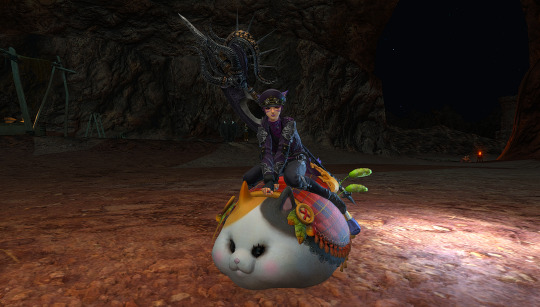
Hm... Jaculus looks... different than I remember. Sir, how much did you eat while I was away?
2 notes
·
View notes
Text
Deinons and Ape Kings
@glarnboudin
I decided to just make this a different post to keep from doing too many reblogs.
DEINONS
Deinon is the name given on Urobia to any significantly large saurian. For the most part the evolutionary relationships between species isn't too widely known, which means that Deinon is an unnatural group made up of animals that have the same general characteristics: Large and Reptilian. Since the size is one of the deciding factors, small theropods are frequently left out, instead being seen by most as strange birds. Small members of other clades can usually remain deinons since their similarities to their larger relatives and their differences from anything else is fairly obvious: A Protoceratops is clearly a small Triceratops, not any other sort of creature, therefor it's a small Deinon. A Velociraptor is a bird with a long tail.
Since the real life scientific names for dinosaurs don't exist on Urobia, the different groups have their own names, which are still somewhat being work-shopped but are more or less as follows:
Carnons/Tyrants: Large theropods, or any Retro or Pseudosaurs which superficially resemble them.
Brontons: Sauropods, or any Retro or Pseudosaurs which superficially resemble them.
Aegis: Ceratopsiand, or any Retro or Pseudosaurs which superficially resemble them.
Armores: Thyreophorans, or any Retro or Pseudosaurs which superficially resemble them. Stegosaurs are called Thagons or Speartails, Ankylosaurs are called Phalans or Shieldbacks.
Chattel: Large Ornithopods, or any Retro or Pseudosaurs which superficially resemble them.
For creatures which are dinosaurs but which aren't considered Deinons, Dromeosaurs are called Calcatrix, Raptors, Bandits, and/or Thieves. Small ornithischians are called Chitters.
Pterosaurs (and any Retro or Pseudosaurs which superficially resemble them) and Marine Reptiles are not always considered Deinons, but sometimes they are. The former are Dactyls and the latter are called Balhuts. Dactyls may also be called Jaculus/Jaculi, though keep in mind that the predatory serpent by this name also exists on Urobia. This can and has caused confusion, though no one can seem to agree as to which is worse to encounter, an actual Jaculus or a Quetzalcoatlus.
Retrosaurs are Pseudosuchians, Squamates, and other saurians which have evolved a superficially Dinosaurian build. These are classified based on the dinosaur group they resemble. A bipedal pseudosuchia carnivore would be a Carnon, for example.
Pseudosaurs are Dinosaurs which have undergone an altered Basilcock ritual (the reason why basilisks and cockatrices hatch out of bird eggs) to align themselves with Saurianhood. Like Retrosaurs they are named after the Dinosaur group they most resemble, though many are Carnons.
Pseudosaurs also have the following traits:
Forked tongues
Venomous
Can have scales, quills, or sparse feathers
Pronated wrists
Claws on all fingers, even if more than three fingers
Extra fingers can be common
Born female, can change sex into male if population requires
It is believed that most Pseudosaurs originate from a single transformed population of a dromaeosaur or primitive bird.
Ape Kings
Primates evolved normally on Urobia (or as normally as anything evolved on this world). Menfolk did not. At some point a Divine (class of beings to which angels, demons, and djinn belong) decided he wanted to create a race of warriors, and in order to do so he had his servant divines breed with apes. This would create the first Ape Kings (bigfoot and so on), which are basically Ape Nephilim. These ape kings would mate back with normal apes, until eventually the first Menfolk species was born, from which they would speciate out into humans, dwarves, elves, half men, goblins, ogres, etc.
Ape Kings as a species still exist, and their ancestry means they're still technically divine beings.
4 notes
·
View notes